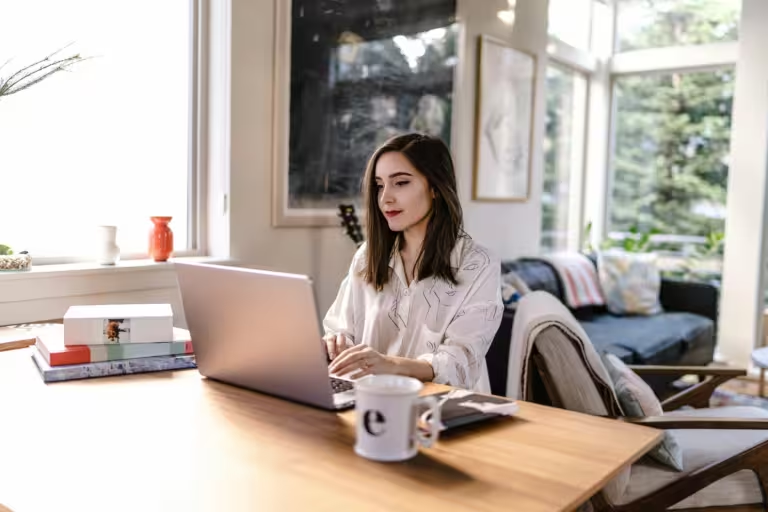Both organic and paid social media advertising offers opportunities for brands to speak to audiences and build brand awareness. Find out all you need to know about running successful social media campaigns.
Table of Contents
Social Media Marketing: Key Components
An online presence, and social media specifically, is crucial to success in the modern world. Over half the world uses social media, and people expect brands to have a social media presence.
Here are the key components of social media marketing:
Strategy
Strategy forms the foundation of a social media marketing campaign. Without a plan in place to determine what you’re trying to achieve and how you plan to achieve it, you could end up wasting your budget and time.
Social media strategy helps you:
- Create valuable content
- Drive engagement with followers
- Increase conversions
Setting goals is imperative to your campaign. Focus on SMART (Specific, Measurable, Achievable, Realistic, Time-Bound) goals. So, instead of saying “I want to get more followers on social media,” set a goal like “I want to gain 1,000 followers on my Facebook business page in the next 30 days.”
When you have a clear goal, you can take concrete steps in achieving it.
Before you start a campaign, you have to:
- Define your target audience
- Plan valuable content
- Refine the messaging to ensure it aligns with your brand values
Consistency must be required in social media. Choose how often you’ll post, then stick to that schedule so your audience can look forward to seeing your new content.
Posting on social media is powerful, but it’s not enough. You have to engage with your audience and learn more about what they’re looking for from your brand. While you may not always receive glowing feedback, you can learn how to improve your brand and your products to better serve your customers.
Analytics
Analytics allow you to track and collect data that provides insights into how your marketing campaigns are performing and how your audience views your brand. You can learn more about the best platforms for your brand, customer behavior, and the ideal times to post.
Advertising
Social media advertising gets exposure for your brand and helps you reach new audiences. The primary social media advertising options include:
- Organic content that grows and fosters engagement for free
- Paid content that’s sponsored and costs money to promote
- Earned content that’s spread through shares, comments, and likes
If you want to increase brand awareness, boost conversions, and build a loyal customer base, advertising is the best way.
For example, the Zutobi driver’s ed app provides helpful educational content for student drivers to prepare for getting a license. Student drivers may come across our paid ad and download it. Once they use it, they may share their experience on social media and recommend the app to other student drivers they know.
Popular Social Media Platforms
Choosing a social media platform for advertising depends on your unique audience, but here are some of the features offered by the most popular platforms:
With a massive user base, Facebook is one of the largest and most popular platforms for marketing. The platform has a variety of tools to help with advertising campaigns, which is perfect for beginners and advanced marketers alike.
Ads are run by the Facebook Business Manager, which is free. Once you have a business account, you can access the dashboard to create a campaign. The first step is defining the goal, such as conversions or brand awareness, then you can customize the audience to ensure that your ad gets in front of the ideal customers.
You can also select the devices you want to target and design how your ads are shown. Facebook automatically recommends the ad placement, but you can also do it yourself.
Instagram is another popular social media platform that uses images and videos to engage with users. Because of the visual content, Instagram has the highest engagement of all platforms. Brands can connect with audiences on Instagram with short- or long-form videos and Instagram Stories.
If you’re not comfortable with video, you can get started with photographs. Instagram has numerous tools to enhance photos, such as filters, and you can get creative with product photos and behind-the-scenes shots.
Not sure what to do? You can use a striking photo to attract attention and then ask a question to engage with followers. Screenshots of a product or app can also go a long way in getting attention.
However you promote your brand on Instagram, be sure to use hashtags to help users find your content. Make your hashtags relevant and unique, such as the name of your brand or the name of your product.
TikTok
TikTok is a fast-growing social media app that relies on short-form video content. Users can customize videos with filters, music, and other features.
If you have a younger audience, they’re probably already on TikTok. Fortunately, many brands aren’t, so you have a chance to get ahead of the competition. Ads are also fairly inexpensive on TikTok, so you can stretch your marketing budget further.
Even though TikTok uses video, users expect raw, authentic content, so your videos don’t have to be perfect. Start with tutorials and how-to videos related to your brand, and don’t be afraid to experiment to see what content catches your audience’s attention.
TikTok also has unique paid ad possibilities, such as native ads, which are boosted by the platform, and hashtag challenges, which use banner ads to gain attention.
Boost Your Brand with Social Media Marketing
Social media is a the most important part of your digital marketing plan. Whether you opt for paid or organic ads, social media can go a long way in getting your brand exposure and attracting new audiences.









